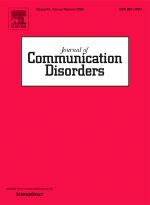Forfattere
Hilda Sønsterud, Margrethe Seeger Halvorsen, Kristin Billaud Feragen, Melanie Kirmess & David Ward.
Abstract
Purpose
This study reports outcomes from a stuttering therapy approach that combines value and awareness-based elements from Acceptance and Commitment Therapy (ACT) with those of stuttering and speech modification interventions. The approach, entitled Multidimensional Individualized Stuttering Therapy (MIST), includes a combined clinician and client selection of factors across five areas: 1) general breathing patterns and body tension, 2) breathing patterns during speech production, 3) vocal features in speech production, 4) value and mindfulness-based strategies, and 5) general communication and/or presentation skills. The aims of this study were to evaluate whether the MIST a) reduces the impact of stuttering and stuttering severity, and b) has a positive impact on speaking ability, confidence in communication, avoidance-behavior, and quality of life.
Method
Eighteen adults, age 21–61 years took part in an A-B-A multiple case study design. Participants underwent a pre-clinic assessment phase, followed by 10 h of therapy over four sessions administered by an experienced speech-language therapist. Outcome measures examined both psychosocial and behavioral aspects of therapy three-, six- and twelve-months post-therapy.
Results
Most participants chose elements from at least four of the five areas of focus. There was a significant reduction in the impact of stuttering at both 6- and 12-months post-therapy, with moderate (d = .71) to very large (d = 1.06) effect sizes. A strong association was found between overall satisfaction with MIST and improved speaking abilities. Moderate to strong associations were also found between experienced speaking abilities, confidence in communication, reduction in avoidance behaviors and improved quality of life.
